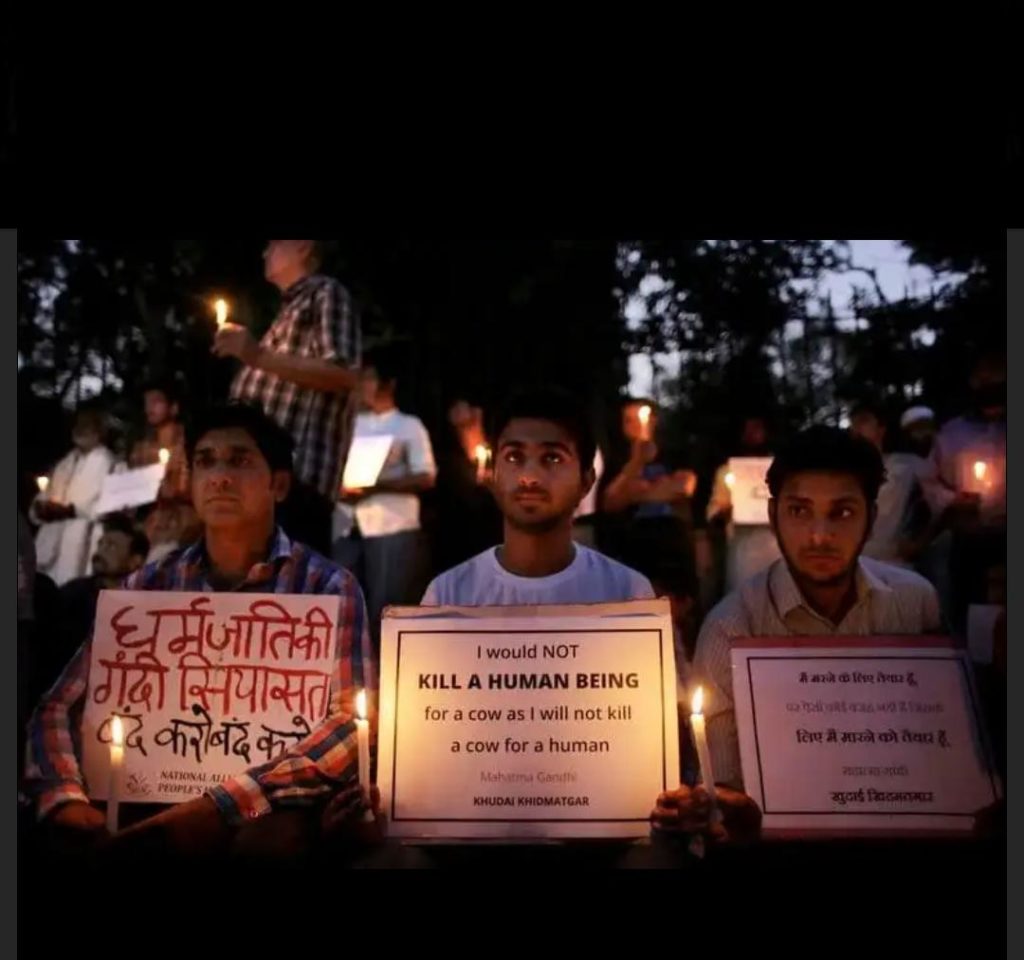Prachi Verma
A peculiar kind of cancer and being more than a mere crowd, a mob consumes nearly every living thing that it contacts. A Mob is a social apparatus that lacks agency and thrives on violence and bloodshed. The mob is driven by instincts, feelings, and hatred which can be provoked quickly and can turn into a riot with just one little spark.
The science of aversion can help us realise who the bigger criminal is. Is the audience more at fault or the lynchers themselves? Or should the government be held responsible?
These inquiries naturally come up when one investigates the psychology of mob lynching. A mob requires the following elements to come together: the victim, the audience, and the lynchers or mobsters. For mobsters, lynching is an expression of their feelings that transcends the state’s legal system. This is where the epicentre of the problem lies. One of the main causes of the rising number of lynching instances is a sense of impunity, which gives people the freedom to do as they please, without fear of legal consequences. A mob feels it is their moral obligation to punish anyone who disobeys their community they have no faith in the legal system and want justice served quickly. This precipitates on the victim as physical result from cloud of rage, frustration, and brittle intolerance. In India, our allegiances and loyalty to societal groups such as caste, religion, and ethnicity often overshadow the rationality and self-awareness inherent in being human, relegating them to secondary importance. The modern mob is easily sparked by rumours that circulate on social media sites. It often begins with simple harassment of minority members, escalating to lynching, as members of the majority group coalesce like a swarm of bees to display their unity and protect their community’s interests. Hot-blooded youths can be easily provoked and often join such gangs without hesitation to punish minority members or anyone perceived as offending their community’s sentiments. For these individuals, it is an opportunity to display their machismo, projecting their masculinity onto society as toxic masculinity plays a significant role in the mindset.
India is a nation rich in social diversity, yet each community bears a burden of past resentments and animosities towards others, revealing a dismal reality beneath its renowned notion of unity in diversity. The development of a virtual mob in such a situation of divergent ideologies poses a serious risk that could upend both the balance of the legal system and moral human behaviour. Each of these individuals within the community has the potential to transform it into an enormous mob, erasing individual boundaries and uniting all members into a single, superior group, which in turn encourages violence. When the mental states of those who commit mob lynchings are examined, several variables become apparent that dictate the offender’s vulnerability to these kinds of consequences. An individual’s personality is moulded by family, culture, and education; these elements instil values, beliefs, and behaviours. If one of these systems is dysfunctional, it disrupts the balance, potentially leading to the overall failure of the individual by fostering negative traits and maladaptive behaviours. Individualism, distinctiveness, and perspectives are continuously undermined by society, media, and social media users. Society imposes conformist norms and pressures, while social media platforms amplify echo chambers, where users encounter and reinforce similar views, limiting exposure to different perspectives. Additionally, individuals and groups exploit religious allegiances to manipulate sentiments, further narrowing viewpoints and fostering divisive ideologies. This process stifles critical thinking and reduces the appreciation for unique perspectives, leading to a homogenized outlook that suppresses individual expression. Lynching as a product of vigilantism, communal bigotry and responses to rumours on social media, has become a social trend. The effectiveness of the local administration, police force, and even society at large gets questioned when the actions of these vigilant groups are endorsed by political organizations. The death of 24-year-old Tabrez Ansari in Jharkhand challenges the stereotype that those involved in mob violence are uneducated and unemployed, as the primary suspect was an NIT graduate.
Delving into the psyche of mob lynchers reveals how societal influences, toxic masculinity, and manipulated community allegiances fuel such atrocities. The Supreme Court’s proactive measures aim to curb this violence, but the root causes must be addressed to prevent the degeneration from Hindustan to Lynchistan. Only by fostering education, inclusivity, and systemic trust can we hope to dismantle the forces that drive mob lynching and promote a more just society.

